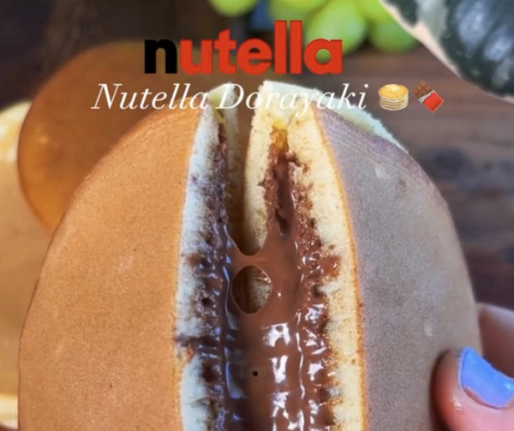History about the recipe
Origins and Tradition
I’ve always loved exploring traditional sweets, and dorayaki is one of the classics of Japanese wagashi. It dates back to the early 20th century, originally filled with sweet red bean paste (anko). That flavor has been a cornerstone of Japanese food culture for generations. The name dorayaki is said to come from “dora” (gong), since the shape looks like a small drum.
From Japan to Fusion
As food travels, it transforms — and dorayaki is no exception. Over time it spread beyond Japan and adapted to new tastes. On my own blog, I wanted to give it a playful twist, so I filled mine with Nutella. It’s a simple idea, but one that perfectly shows how Japanese tradition can meet Western chocolate-hazelnut sweetness.
Variations and Creativity
Of course, there are endless variations of dorayaki:
- The classic with red bean paste (anko)
- Matcha cream or vanilla cream for a modern twist
- Fruit jam or chestnut paste, which I’ve seen highlighted in places like Cookist
Still, the Nutella version has become a favorite in my kitchen — it’s fun, kid-friendly, and a little easier to love if you’re not used to traditional Japanese flavors.
Dorayaki Today
For me, dorayaki is both a way to connect with Japanese tradition and to play with global flavors. It’s also become a trendy dessert on social media and food blogs. The Nutella-filled version, in particular, has helped bring dorayaki to new audiences — a sweet symbol of how old traditions can get new life when reimagined with a modern twist.












